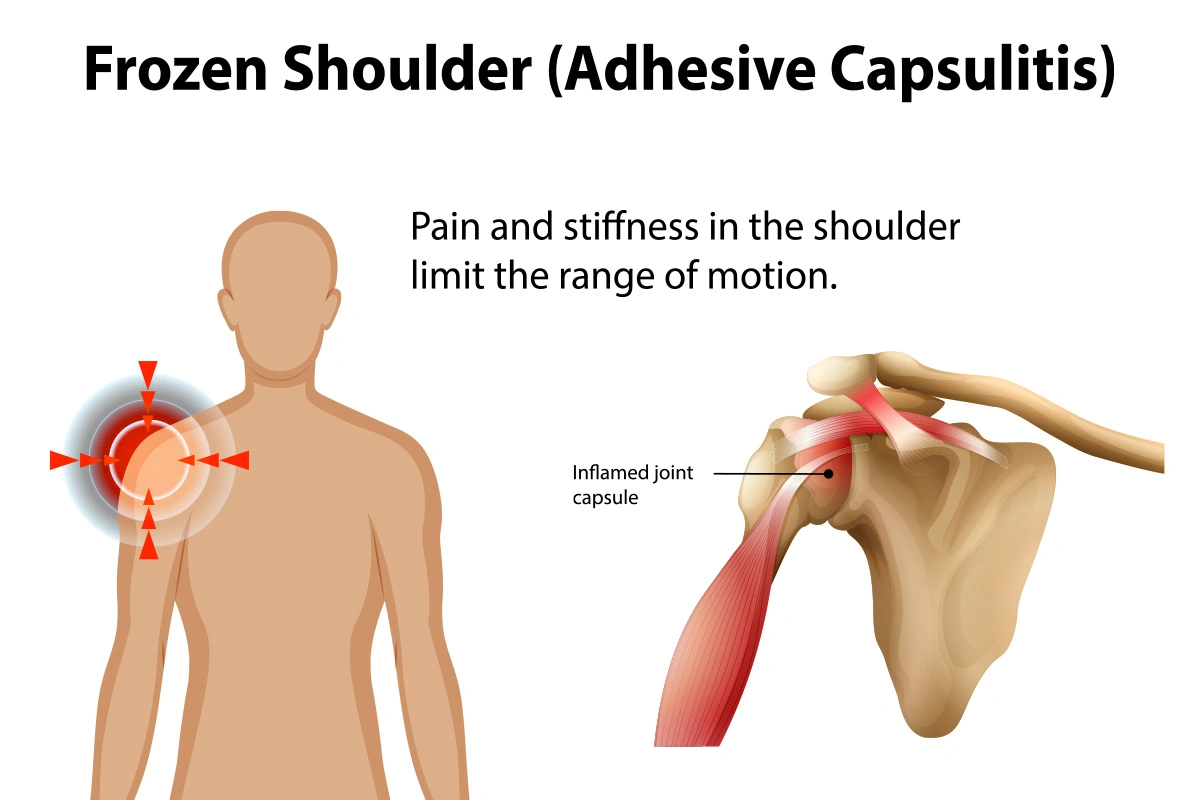Not all breast pain means cancer—but knowing when to act could save your life.
Have you ever experienced one of those nights where a tiny shoulder irritation makes you awake the whole night? You spend the night turning and tossing in bed, trying to find a comfortable position, but your shoulder pain just won’t let you rest. This kind of shoulder pain is able to keep you awake throughout the night. When the pain and disrupt sleep cycle repeats, it makes you very frustrated. Finally morning arrives and you stretch your arms with a big yawn. But instead of that satisfying morning stretch, your shoulder pain makes you scream.
The pain is so intense and unexpected that you’re left clutching your shoulder, wondering what just happened! Your mind starts thinking about your recent activities. Is this because of that sports activity yesterday? Or maybe from moving that heavy piece of furniture? Did I overdo it at the gym? Could it be the weather acting up? You go over every possibility, trying to figure out what triggered this. Then comes a medical term in your mind which you’ve heard before but never truly experienced “frozen shoulder”. Now that you might be facing it yourself, it’s time to understand what it really is, why it happens, and what you can do about it.
Frozen shoulder (also known as adhesive capsulitis) is a common disorder that causes pain, stiffness, and loss of normal range of motion in the shoulder. The resulting disability can be serious, and the condition tends to get worse with time if it’s left untreated. It has been noted that it affects mainly people ages 40 to 60 with women affected more often than men.

To understand better the frozen shoulder causes, it’s important to get to know about the structure and function of the shoulder joint.
So your shoulder joint is also called a glenohumeral joint or in simple words it is a ball and socket joint. So basically the ball is the top of your upper arm (humeral head), and the socket is like a shallow cup part of your shoulder blade. This joint is considered to be the most mobile joint in your body as it allows you to lift, reach and rotate your arm freely. The shoulder joint is surrounded by a layer of tissue called the capsule, it is a flexible sleeve that keeps the joint stable while allowing movement.
Now you must be wondering what actually happens in your shoulder which makes it frozen. In the frozen shoulder, this capsule becomes inflamed, irritated and painful. As time passes, scar tissues which are also known as adhesions form inside the capsule. These adhesions cause the capsule to tighten and lose its natural folds, so it can’t stretch the way it used to.
This process is called adhesive capsulitis, “adhesive” for the sticky scar tissue, and “capsulitis” for inflammation of the capsule. As a result your shoulder feels stiff, sore, and unwilling to cooperate, even for the simplest movement. The joint becomes “stuck,” making movement tight, limited, and painful.

So the important thing is to be aware of frozen shoulder signs and symptoms. The onset of symptoms is not sudden. Symptoms appear gradually and make your simple movements difficult. The common symptom is pain in the shoulder and upper arm, which may feel sharp at times or dull and aching at others. You may notice nighttime pain that disrupts your sleep, you may spend the whole night turning and tossing to find a comfortable position. Another indication is that you will notice a gradual loss of movement, especially when trying to lift your arm overhead or reach behind your back. You may experience increased stiffness when attempting to use the arm for regular tasks like:
Over time, these symptoms can significantly limit your mobility and affect your quality of life if left untreated.

Frozen shoulder can affect anyone, but certain factors make it more likely. They are:

A frozen shoulder can be frustrating, but knowing the stages can help you understand what’s happening.

Those who are suffering from frozen shoulder usually ask “how long does frozen shoulder last” or when will we be able to perform activities without pain? So the answer is frozen shoulder can vary greatly in how long it lasts and how severe it feels. In some mild cases, the stiffness and pain may improve within just three months. It has been noticed through various researches that usually recovery follows a slower path. It takes 12 to 18 months to fully resolve. The duration of recovery mainly depends on some factors like overall health status. If you have any associated medical condition like arthritis, diabetes or other medical condition, recovery time will vary. The key is to understand that frozen shoulder is self-limiting condition. As it’s improve on its own. But the journey of frozen shoulder require patience. It’s important to seek professional guidance to make smooth and steady recovery.

When you’re dealing with a frozen shoulder, the first step is usually to focus on easing the pain until the worst phase appears. Sometimes, your shoulder regains movement on its own but if it doesn’t, your pain management specialists may recommend some medications and physical therapy.
Following are some of the effective treatment options for frozen shoulder or adhesive capsulitis.
If your pain and stiffness still haven’t improved after about a year, there are more advanced options:
Often, both procedures are done together for the best results.

If you are suffering from a frozen shoulder, just don’t delay in getting help .You should visit a pain management clinic and seek help as soon as possible. You should seek help from a doctor if your frozen shoulder symptoms are impacting your daily activities, or making your sleep pattern disturb. It has been noticed that frozen shoulder often resolve on their own. But it’s very important to evaluate the root cause for frozen shoulder as rotator cuff tears or other pathologies of the shoulder may mimic the pain. Your pain management specialist may recommend treatments like corticosteroid injections if the pain is not setting with initial management. In case of some medical conditions like diabetes, arthritis and other conditions, medical monitoring is very necessary. As these factors can significantly influence both the severity and duration of your frozen shoulder experience. So it’s better to seek medical attention timely.
There are certain ways through which frozen shoulder can be prevented. You can prevent it by maintaining shoulder mobility through regular exercise, avoiding prolonged shoulder immobilization, practicing good posture, and seeking prompt treatment for any shoulder-related issues.
Recovery phase of frozen shoulder vary from person to person. In some cases, it takes 12 to 18 months while in severe cases it may last up to three years. Early diagnosis and treatment can speed up recovery and reduce discomfort.
Frozen shoulder pain usually involves the entire shoulder joint area but often radiates down the upper arm. The pain is usually deep and aching in nature, concentrated around the shoulder capsule, and may extend toward the neck and upper back during severe episodes.
Frozen shoulder also known as (adhesive capsulitis) is a painful condition of shoulder to live with. The pain and stiffness in your shoulder joint can make it difficult or even impossible to perform daily activities that you once did easily. If at home you are treating yourself with pain killers and some gentle exercises but still the pain persists then it’s time to reach out to your pain management specialist for better treatment plan. They may recommend pain relieving injections and physical therapy. Your provider can help you find the best treatment option for you. At our clinic pain treatment MD, we offer personalized treatment plan to relief your pain and to improve your mobility.

